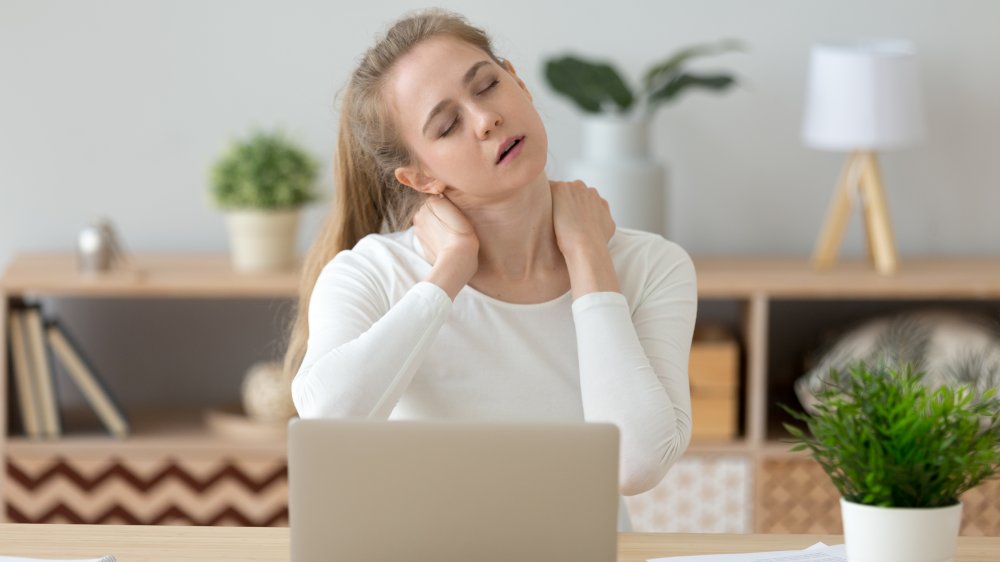How To Avoid Back Pain While Working From Home
If you've found yourself working from home in the midst of the coronavirus pandemic, you are far from alone. More and more people are working remotely as the outbreak spreads. While working from home helps maintain social distancing and keeps people safer, it comes with its own set of challenges.
One of the drawbacks of working from home is that switching up your work setup can also lead to back pain thanks to changes in seating and posture. If you've been feeling a twinge in your lower back, don't despair. There are some easy things that you can do to minimize back pain while working from home.
Change up your posture and grab a pillow to avoid back pain while working from home
Occupational therapist Karen Jacobs told CNBC Make It that one simple thing you can do to avoid back pain is to change up your posture throughout the day. Jacobs explained that holding one position for too long can lead not just to back pain but also neck and shoulder pain. Physical therapist Eric Robertson recommended changing positions every hour, perhaps going from sitting at the kitchen table to standing to sitting on the sofa.
Pillows can also make a world of difference. Robertson recommended putting a thin pillow under your seat, or even a fluffy towel. A lumbar support pillow or a rolled up towel can also help with lower back pain when placed between your lower back and your chair.
Make sure your laptop is in the right position when working from home
It's also important to have your computer in the right position, with your monitor just beneath your eye level. "Laptops are never going to be ergonomically good, because the monitor is either going to be too low or the keyboard is going to be too high," said Robertson.
Putting your laptop on some books or shoeboxes can bring it to the correct eye level which will help avoid eye strain while reading. Just make sure to lower it when you need to type, as your arms should be bent at 90 degree angles while typing.
Perhaps the most important advice is to remember to take a break. Jacobs suggested setting a timer to remind you to take a three to five minute break every half hour. "Adding regular exercise, even if it's low-level activity, is really important to keep your body healthy and avoid back pain," said Robertson.


